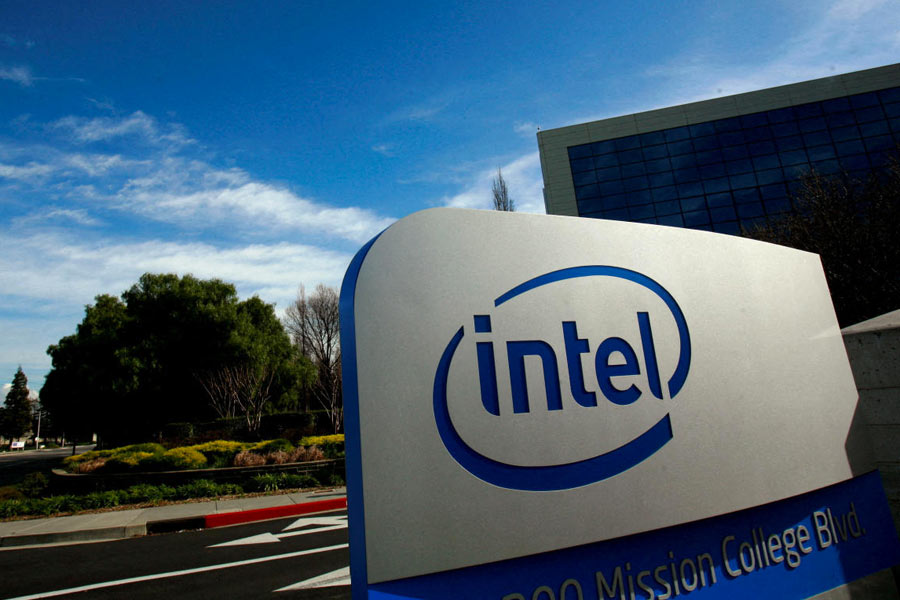Chipmaking giant Intel is set to lay off around 5,500 employees across various US states in a restructuring move aimed at cutting costs and addressing mounting financial stress.
The job cuts, affecting engineers, senior leaders and back-office roles, represent the latest chapter in the company’s ongoing struggle to retain relevance in an AI-dominated semiconductor landscape.
This is not Intel’s first round of layoffs in 2025. The company has already axed 15,000 jobs earlier this year. The current downsizing exceeds initial projections of 4,000 job cuts, and sources suggest more may follow.
CEO Lip-Bu Tan, who recently took over leadership, has signalled plans to reduce the workforce by up to 20 per cent as part of a broader cost-cutting effort.
In an address to employees reported by OregonLive and The Economic Times, Tan admitted, “Twenty, thirty years ago, we were really the leader. Now… we are not in the top 10 semiconductor companies.”
Intel’s market capitalisation stands at $103 billion — less than half of what it was 18 months ago. The drop in value has pushed the company behind at least 15 rivals, including Nvidia, which last week reached a $4 trillion valuation on the back of AI-fuelled investor confidence.
The layoff spree comes at a time when Intel is attempting to revitalise its foundry business, which is to produce chips for other companies, and introduce its next-generation process technology, Intel 18A.
But there is scepticism in the industry regarding whether customers will adopt the new process node. Intel's CEO Pat Gelsinger previously acknowledged these concerns, telling Reuters that customer feedback remained uncertain despite the technology’s competitiveness with TSMC's advanced offerings.
Founded in 1968 by Gordon Moore and Robert Noyce, Intel was once the undisputed leader in semiconductor innovation, having developed the first commercial microprocessor in 1971.
Through the 1980s and 1990s, the company rode the x86 wave and powered the personal computing boom. Intel became synonymous with innovation, scale and reliability. Its “Intel Inside” campaign and tight integration with Microsoft’s Windows, also known as the "Wintel" alliance, gave the firm decades of market dominance and unrivalled brand power.
A series of strategic missteps, particularly in the mobile and AI eras, have reshaped the company’s trajectory.
One of the most damaging decisions in Intel’s history came in 2006 when it declined Apple’s offer to produce chips for the first iPhone. Former CEO Paul Otellini later admitted that the company had misjudged the opportunity.
Intel also sold its XScale ARM processor business. The move allowed rivals like Qualcomm to seize control of the mobile market. Today, ARM-based chips power more than 99 per cent of smartphones globally.
This failure to establish a foothold in mobile had cascading effects. Intel missed the innovations in power efficiency and chip customisation that now form the foundation of AI computing.
Intel also stumbled in manufacturing technology, which has always been it’s traditional stronghold. Delays in transitioning from 14nm to 10nm, and later to 7nm, cost the company years while rivals like TSMC surged ahead.
Intel’s slow adoption of EUV lithography, the industry standard for next-gen chips, further widened the gap.
TSMC’s foundry model, focused on contract manufacturing for third-party chip designers, allowed it to scale rapidly and attract key clients like Apple, AMD and Nvidia. As of 2025, TSMC commands over 67 per cent of the global foundry market.
The AI era has exposed Intel’s inability to adapt to a paradigm shift in computing. Nvidia, once a niche graphics card company, now dominates the AI chip market with over 90 per cent share in training accelerators.
Intel took several attempts to catch up, including its acquisition of Habana Labs and development of Gaudi AI processors, but has failed to make a dent.
In Q3 2024, Intel reported a staggering $16 billion loss. CEO Tan recently acknowledged the firm is “too late” to catch up in AI, and experts say it may have missed the window of opportunity entirely.
Another blow to Intel’s relevance has been the rise of custom silicon. Major cloud players like Amazon, Microsoft and Google now design their own chips for optimised performance. Apple’s transition to its ARM-based M-series chips for Macs has also eroded Intel’s PC foothold.
Intel, once king of the general-purpose CPU, finds itself increasingly marginalised.
Intel’s decline also carries geopolitical implications. As the only major US chipmaker with advanced manufacturing capabilities, its struggles amplify concerns about American dependence on Asian foundries, especially TSMC in Taiwan.
The US government has responded with initiatives like the CHIPS Act, allocating billions to reshore semiconductor production. Yet, without a strong Intel, analysts warn the US risks falling behind in critical technologies that power everything from AI to defence systems.
Intel’s layoffs are a symptom of a deeper structural challenge. Once the symbol of America’s tech supremacy, the company now grapples with an existential question.

